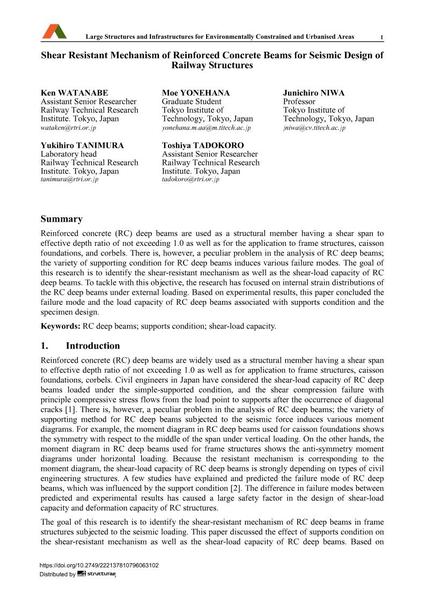Shear Resistant Mechanism of Reinforced Concrete Beams for Seismic Design of Railway Structures

|
|
|||||||||||
Bibliographic Details
| Author(s): |
Ken Watanabe
Moe Yonehana Junichiro Niwa Yukihiro Tanimura Toshiya Tadokoro |
||||
|---|---|---|---|---|---|
| Medium: | conference paper | ||||
| Language(s): | English | ||||
| Conference: | IABSE Symposium: Large Structures and Infrastructures for Environmentally Constrained and Urbanised Areas, Venice, Italy, 22-24 September 2010 | ||||
| Published in: | IABSE Symposium Venice 2010 | ||||
|
|||||
| Page(s): | 612-613 | ||||
| Total no. of pages: | 6 | ||||
| Year: | 2010 | ||||
| DOI: | 10.2749/222137810796063102 | ||||
| Abstract: |
Reinforced concrete (RC) deep beams are used as a structural member having a shear span to effective depth ratio of not exceeding 1.0 as well as for the application to frame structures, caisson foundations, and corbels. There is, however, a peculiar problem in the analysis of RC deep beams; the variety of supporting condition for RC deep beams induces various failure modes. The goal of this research is to identify the shear-resistant mechanism as well as the shear-load capacity of RC deep beams. To tackle with this objective, the research has focused on internal strain distributions of the RC deep beams under external loading. Based on experimental results, this paper concluded the failure mode and the load capacity of RC deep beams associated with supports condition and the specimen design. |
||||
| Keywords: |
RC deep beams supports condition shear-load capacity
|
||||
